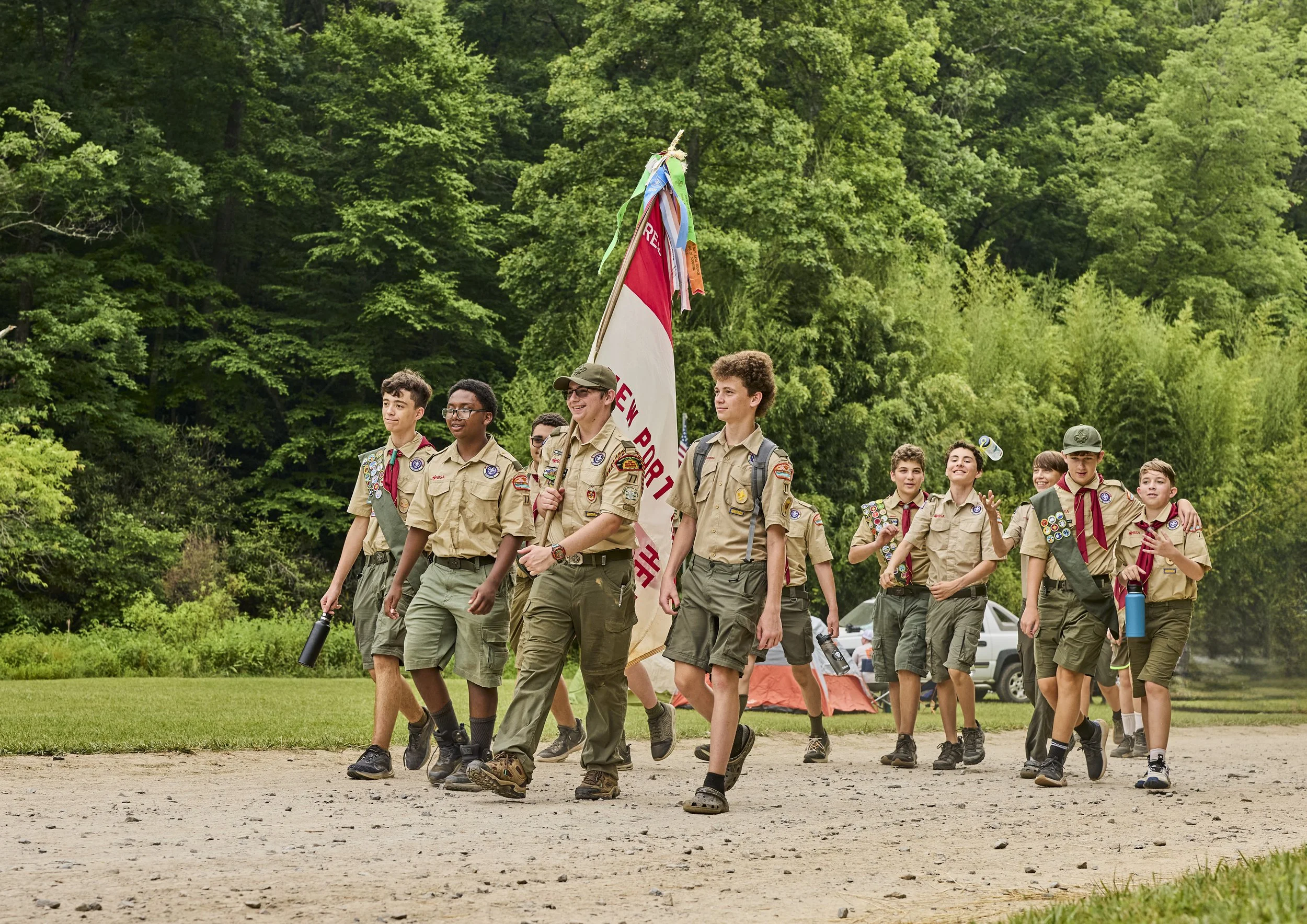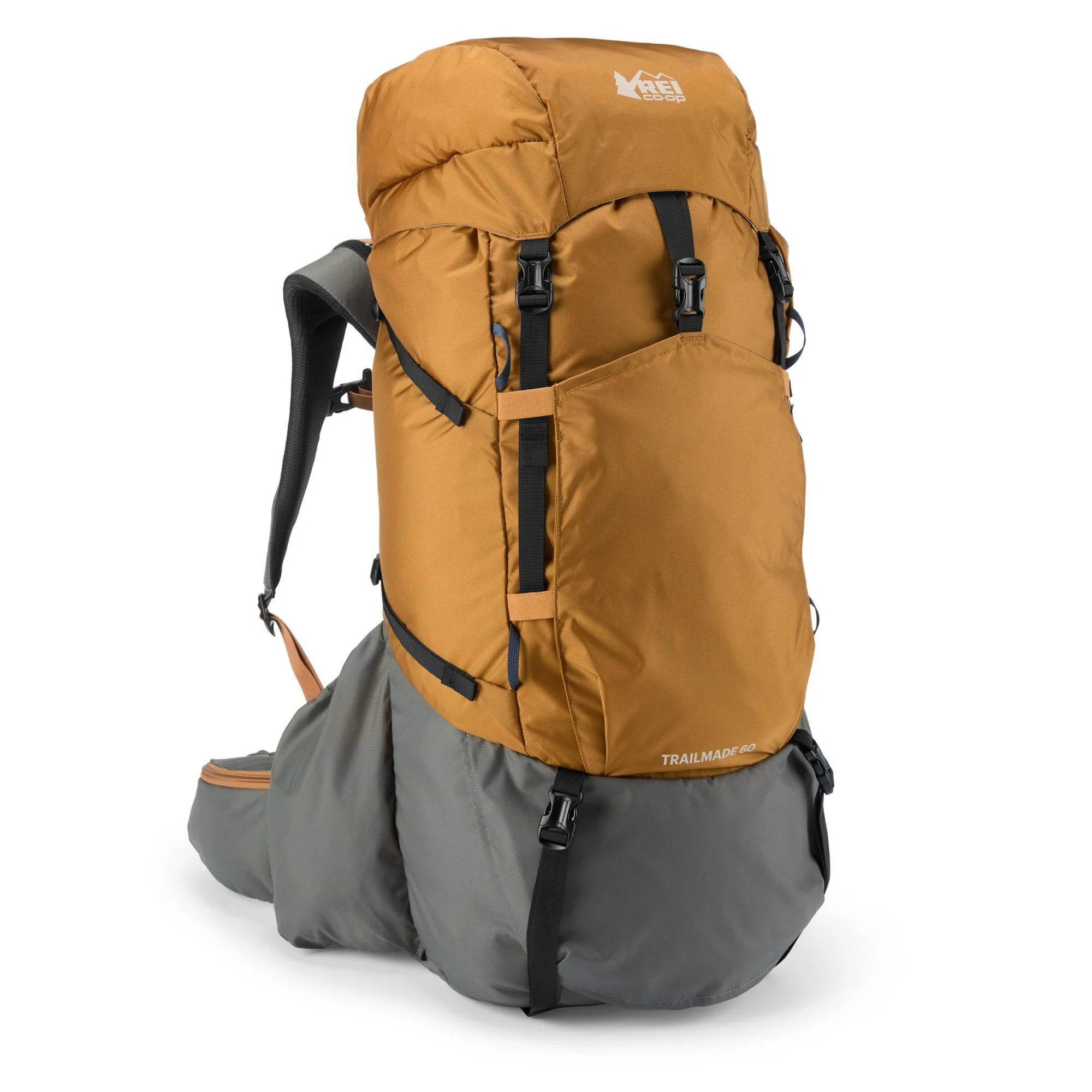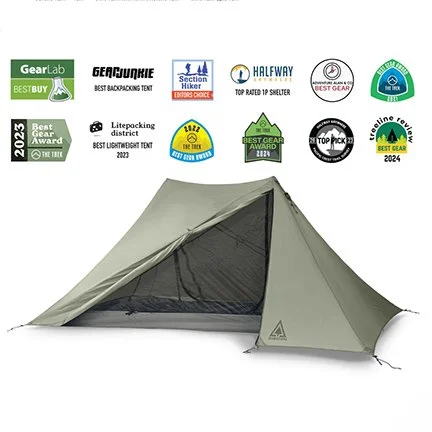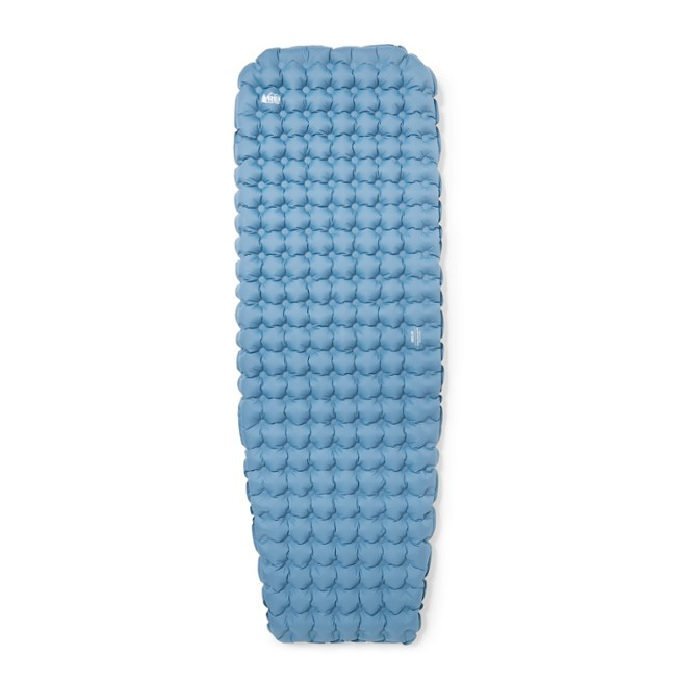Gearing up Your Scout
As a Scout, it is your responsibility to be prepared with the proper uniform for our meetings and activities and camping gear for our monthly camping trips. This is your guide for both.
Uniform
The Boy Scout Uniform is a critical part of being a Scout, representing the many traditions important to Scouting. It serves to unify the group, provides structure and organization, and identifies where each scout is along his or her path to Eagle. Troop 1 requires wearing the proper uniform for all meetings and events. Thus, Scouts are expected to have at least one complete Class-A and B uniform.
Class A Uniform
This is the official Scouting USA uniform, and includes a shirt, pants, belt, and socks. A sash displaying the merit badges you’ve earned is added for more formal occaisions.
-
You can purchase your official Scout uniform at the Coastal Georgia Council office here in Savannah. The address of the Council Office is:
11900 Abercorn Street, Savannah, GA 31419
Alternatively, you can purchase your uniform at the Scouting USA Online store, which can be found here.
-
This is our official Scouting USA uniform, and is worn on occasions where we need to represent ourselves as Scouts. We wear our Class A uniform at:
Official Events
Our weekly meeting
For official reviews, like the Board of Review where Scouts are evaluated for advancement
Ceremonies, like our bi-annual Court of Honor awards banquet
When Representing Scouting in Public
On days where we are travelling to events
At fundraising activities
Marching in the St Patrick’s Day parade
Class B Uniform
Class B’s are our “dress-down” uniform, where we replace our Class A uniform shirts with the official Troop 1 casual shirt.
-
The Class B t-shirt is purchased from the Troop. You can buy one at our weekly meetings, or off of our website here.
-
Activities where we have fun and get our hands dirty, like:
Camping trips
Hiking
Cycling
Other outdoor activities
Service projects
Insignia Placement Guide
The insignia on Scout’s uniform tell a story about their journey in Scouting, including the rank they’ve achieved, the organizations they belong to, and the responsibilities they have in the troop.
Scouting USA has a set of guideline as to where insignia patches are to be placed on the uniform. Please use the diagram on the left as a guide. Troop 1 will provide all the required insignia patches to you, and you can have them sewn on at the Coastal Empire Council office when you purchase a uniform there.
Alternatively, you can sew them on yourself, or take them to a seamstress. There is one specializing in military insignia located outside of the White Bluff Road gate of Hunter Army Airfield. Their address is:
Express Sewing and Dry Cleaning
6608 White Bluff Road, Savannah, GA 31405
Camping Gear
The great outdoors challenges Scouts to find their limits and push beyond them, teaching them resilience, responsibility, and self-reliance. Our task as parents and adult leaders is to prepare them for their outdoor adventures. The first step is to outfit them with appropriate equipment, and we have developed the recommendations below to help parents (and their kids) in that process.
Packing List
We’ve provided a list below of all the equipment that your Scout will need to bring on a typical camping trip. Many of the items you’ll probably have at home already. This list might change slightly depending on the outing, for example, a canoeing trip vs. summer camp. But we’ll let you know beforehand if there is anything else your Scout will need; the list below will cover 80% of our outdoor activities.
Gear Buying Guide
Even when we are camping, Scouts need to be able to carry all of their own gear by themselves to our campsites, whether that’s 100 feet or 10 miles. So, every Scout needs to choose their gear wisely for good value, durability and portability.
Thus, the "Big Three"—shelter, sleep system, and backpack— are the most critical gear choices ahead of you, as they are the main drivers of both the cost and weight of your gear loadout.
So, in this guide, we have focused on gear that is both portable and of good value. Given that your Scout should carry no more than 10-20% of their body weight on their backs for an extended period, you should shoot for a pack, tent, and bag that weigh no more than 10-12 lbs combined. We’ve also chosen value gear that can keep the price tag for your “Big 3” under $500.
Backpacks
When selecting your Scout’s backpack, think of this as an investment for the long haul. A carrying capacity of 50-60 liters is the sweet spot here…while your Scout will not be going on multi-day backpacking trips initially, he WILL have a lot of bulky beginner’s gear that will need to be stowed in the pack. Over the years, he or she should accumulate better, less bulky equipment, but on the other hand may want to start going on multi-day Adventure outings (Philmont Ranch, perhaps?) where space for packing food and water will be required.
You also want a pack that not only fits now, but that has enough adjustability “headroom” to grow with your Scout’s body. Here is a quick guide on measuring your Scout’s torso length, this is the key measurement you’ll use to select a pack size.
Decathlon Forclaz MT500 Air 50+10
$139
Packed with features found in backpacks twice its price, this is a GREAT backpack for anyone starting out. VERY adjustable for the price point.
Best Deal
-
Weighs 3.7 lbs
Comes in 1 size, adjusts to fit torsos 14” to 20” long
Comfortably carries 35 lbs.
-
REI Trailmade 60
$169 (but often goes on sale…)
This is a traditional pack that will fit almost anyone reasonably well. The shoulder straps could be better, but the waist belt is a dream and will set a high bar for someone’s next pack. This pack will hold up for a few years, but your Scout will probably need to replace it about the time he or she outgrows it.
-
Weighs 3.6 lbs
Comes in 2 sizes, adjusts to fit torsos 17” to 21” long
Comfortably carries 45 lbs.
-
Durston Kakwa 55 Ultragrid
$199
For a Little Bit More…
The Kakwa 55 is a durable, lightweight pack that still comfortably carries a heavier load. It has won multiple online awards for best price/performance of any hiking backpack. Convenient outside pockets made for carrying wet gear, plus lots of other well-thought-out design details.
-
Weighs 1.8 lbs
Comes in 3 sizes, adjusts to fit torsos 15” to 22” long
Hipbelts also come in 3 sizes
Comfortably carries 45 lbs.
-
1-Person Tents
Troop 1 camps in 1-person tents in order to give each Scout a safe, private space, as well as to give them less of a burden to carry. The tents we recommend here are all dual-walled construction (i.e., a rain fly stretched over a mesh inner tent), which though slightly heavier is better at avoiding water condensation forming on the tent’s interior in our wet, humid climate. Another alternative enjoyed by many Scouts is a camping hammock, but those won’t work at all campsites.
Kelty Late Start 1 Person
$140
Best Deal
A great value and incredibly easy to set up. Its integral tent poles and domed design also give it substantial headroom and a little more structure in bad weather.
-
Weight: 4 lbs
Floor Space: 20.6 sq. ft.
Peak Height: 56 inches
Conventional free-standing tent with integrated poles
-
Six Moons Skyscape Scout
$160 + $30 for poles
This tent was designed by Six Moons specifically for Scouts who are seeking an affordable tent that is light in weight. Appropriate for its target audience, it sacrifices a little weight saving to incorporate more durable materials. It is quite roomy for a one-person tent and provides excellent ventilation for hot climates.
-
Weight: 2.5 lbs
Floor Space: 23 sq. ft.
Peak Height: 45 inches
Requires you to seam seal the tent yourself
-
The Trek Skyscape Scout Review
Section Hiker Skyscape Scout Review
Durston X-Mid 1
$234
For a Little Bit More…
Recognized by many as among the best value 1-person hiking tents on the market. Strikes a great balance between weight, durability, weather resistance, and price.
-
Weight: 1.9 lbs
Floor Space: 20 sq. ft.
Peak Height: 46 inches
Must use your own hiking poles to pitch tent
-
Sleeping Bags and Hiking Quilts
Scouts in most parts of the country look for sleeping bags that will keep them warm in freezing temperatures. However, here in the South, we need bags designed to be comfortable during warm nights and which can be augmented for a couple of months a year when temperatures fall below the 40s. Many recently have turned to backpacking quilts, which can strap to the sleeping pad but allow greater ventilation in warm months than conventional closed bags. All three selections below are chosen to allow for adjustment across the 4 seasons.
ALPS Mountaineering Fusion +40°
$139
This mummy bag/quilt hybrid has a top that pulls completely back during warm summer months to increase breathability. Not to mention the price is really competitive for this level of quality.
Best Deal
-
Weight: 2.1 lbs.
Quilted down top is unattached on three sides allowing it to fold open for more freedom
The down top can be tucked in and secured with a toggle system when more warmth is required
-
Nemo Tempo 35°
$139
This is THE bag for restless side sleepers with its generous cut and “spoon” shape. A little heavier than the other two, but its ability to accommodate tossing and turning is matched only by a backpacking quilt.
-
Weighs 3.1 lbs
Comes in 2 sizes, adjusts to fit torsos 17” to 21” long
Integrated pillow pocket allows a jacket, extra clothes, or Fillo™ to be stuffed in the sleeve opening for a handy pillow on-the-go.
Comes in a women’s model also.
-
It all begins with an idea. Maybe you want to launch a business. Maybe you want to turn a hobby into something more.
Zenbivy Light Bed 40°
$228
The Zenbivy quilt has reveived a lot of hype in the last couple of years as being the most comfortable “sleep system” available for sleeping outside. Or buy just the quilt and you have a lighter version of the ALPS bag.
For a Little Bit More…
-
Weight: 1.6 lbs (1.2 bs. quilt only)
Add the sheet to secure the quilt to your sleeping pad in cold weather, eliminating drafts and adding a cozy 25° down hood.
Unzip it flat and use as a conventional quilt, drape it over your sleeping pad in warm weather
-
Sleeping Pads
A good sleeping pad is equally essential for ensuring a good night’s sleep outside. It provides both a cushiony bed and insulation from the cold, hard ground. But as we said with sleeping bags above, the climate we have here in the Southeast does not require sleeping pads with particularly high insulation R-values. So, while top-of-the-line sleeping pads cost over $200, this is a place to save a little money.
Klymit Static V2 + Nemo Switchback
$57 (Klymit) + $60 (Switchback) = $117
The Klymit V2 is durable, lightweight, and packs down to a small size. Its also a huge bargain. Unfortunately, it offers little insulation. When the temperature falls, add the Switchback pad underneath for more warmth.
Best Deal
-
Weight: 1 lbs. (Klymit) + .9 lbs. (Switchback) = 1.9 lbs.
R-Value: 1.9 (Klymit) + 2 (Switchback) = 3.9
Dimensions (Klymit): 72” x 24” x 3”
Packed Size: 3” x 8” (Klymit), 20” x 5.5” x 5” (Switchback)
-
Nemo Quasar 3D
$159
Excellent value for a durable, cozy sleeping pad that can also be used for backpacking and car camping. Given the bulk of the Switchback foam pad, it is also far more packable than the Klymit + Switchback combination.
-
Weight: 1.9 lbs.
R-value: 3.3
Dimensions: 72” x 20” x 3.5” (Regular)
Packed Size: 4.5” x 8”
-
REI Helix Insulated Air
$169
For a Little Bit More…
For an extra $10 over the Quasar 3D, the REI Helix is wider, still removes a few ounces your load and sleeps a little warmer. Testers find it’s design more comfortable for side sleepers.
-
Weight: 1.6 lbs.
R-value: 4.9
Dimensions: 72" x 24" x 3"
Packed Size: 5” x 10”
-

















